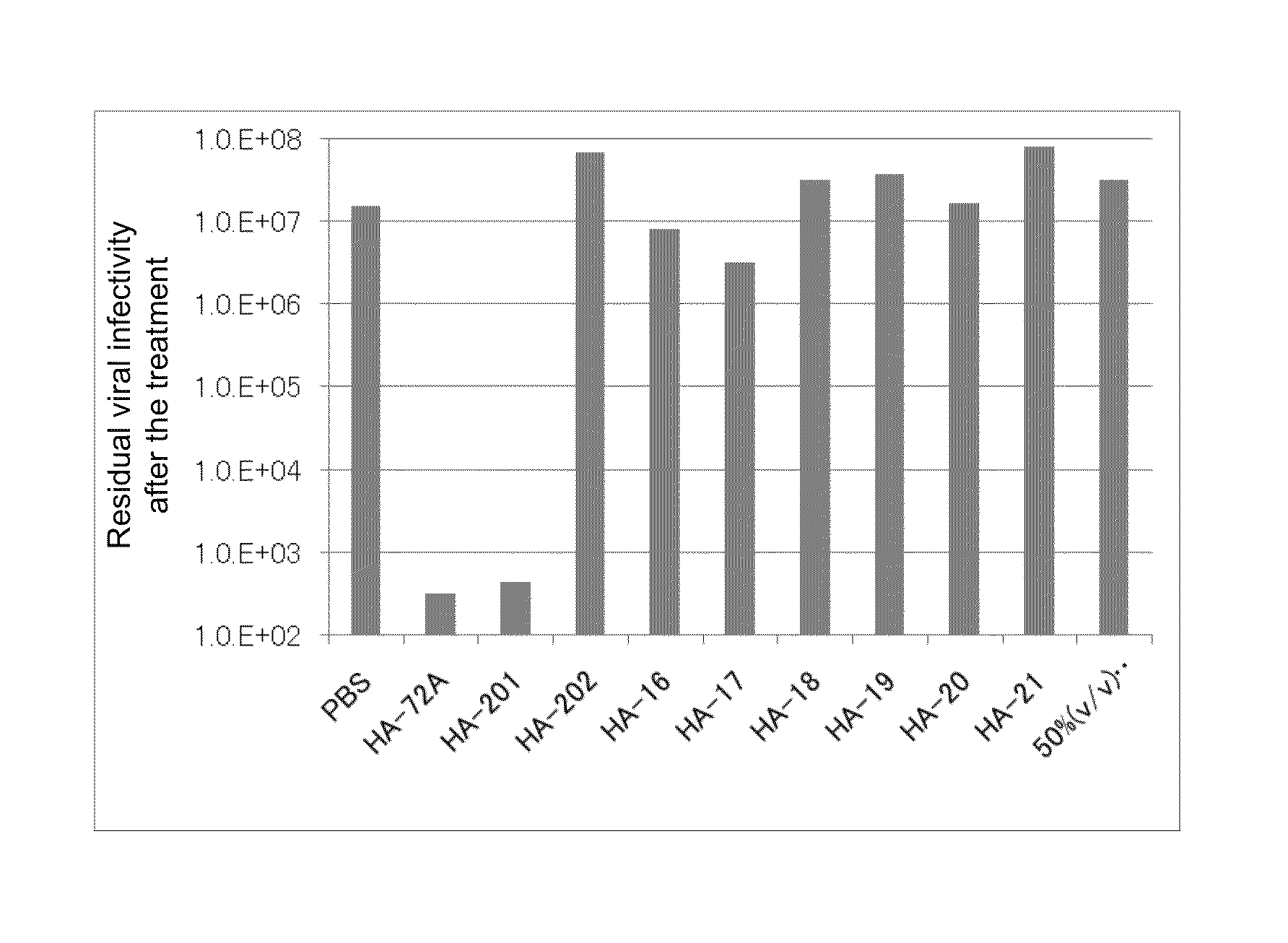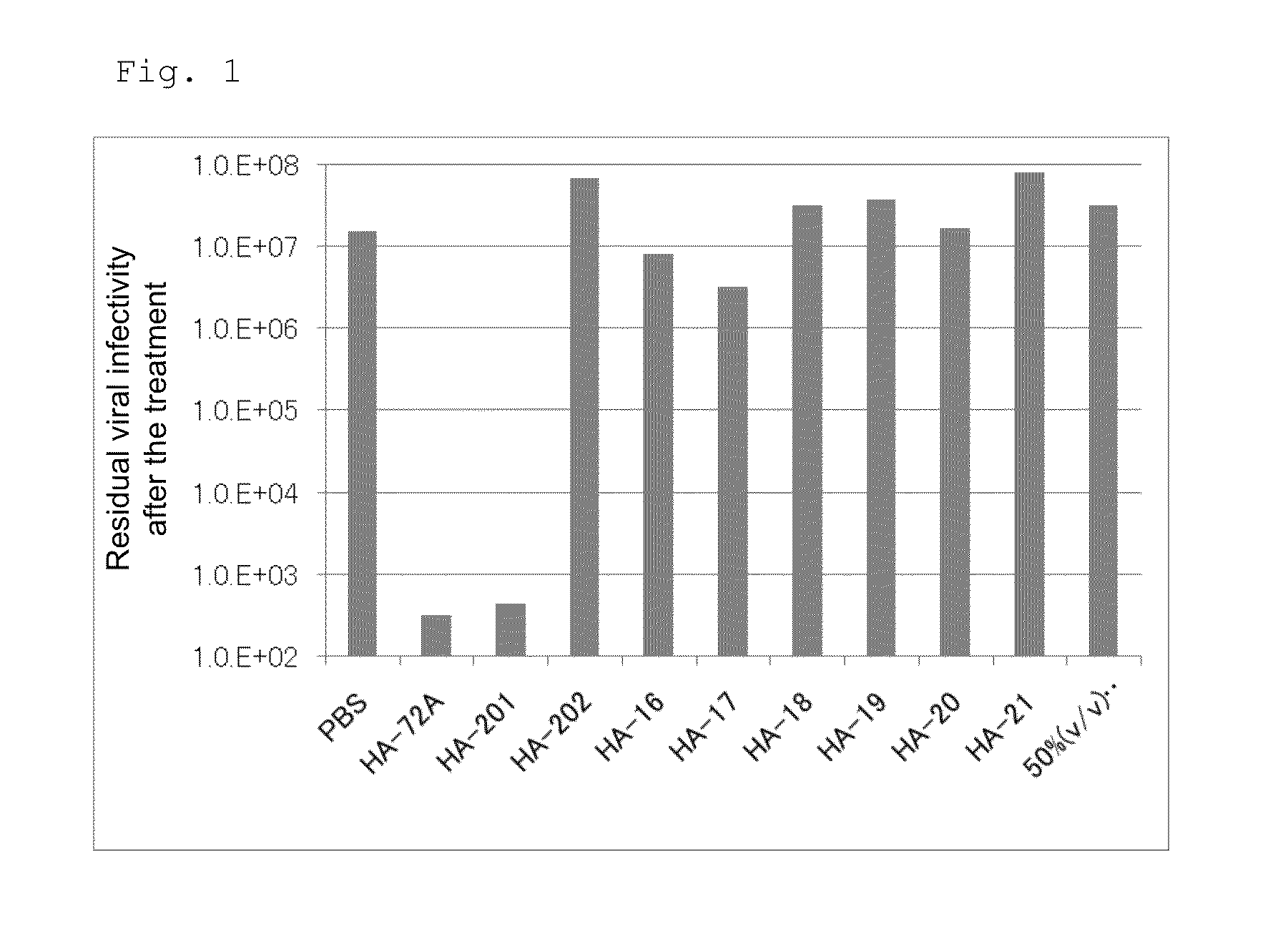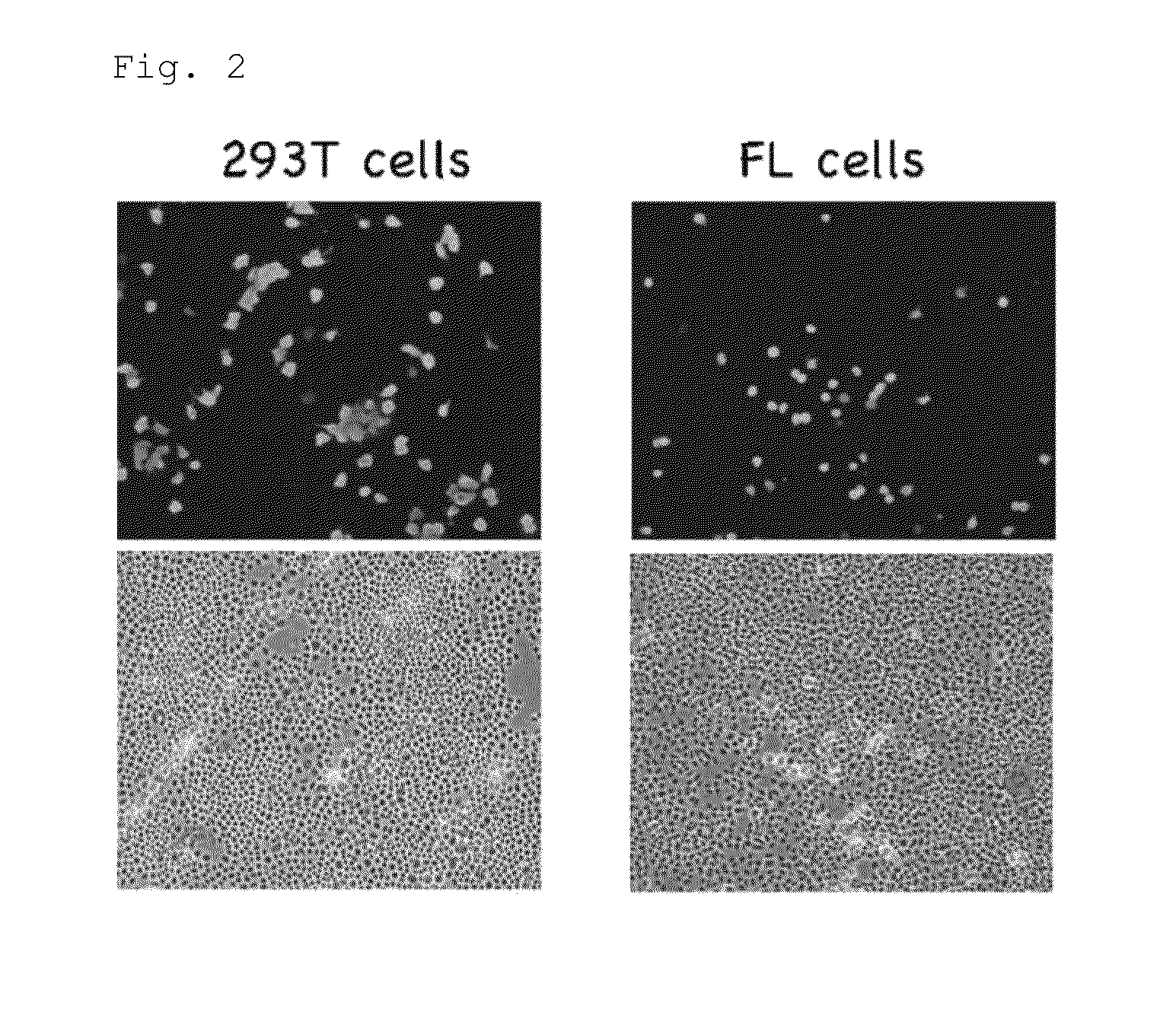Method for disinfection or infection control against a non-enveloped virus
a non-enveloped virus and disinfection technology, applied in the field of antiviral agents, can solve the problems of difficult cure of viral diseases, no effective curing method for non-enveloped viruses, and no effective cure method for viruses. , to achieve the effect of reducing the incidence of diseases, efficient disinfection and infection control, and excellent effect on non-enveloped viruses
- Summary
- Abstract
- Description
- Claims
- Application Information
AI Technical Summary
Benefits of technology
Problems solved by technology
Method used
Image
Examples
example 1
Verification of Effect on Fish Disease Virus
(1) Viruses Used
[0159]The characteristics of the viruses used are shown in Table 2. Viral nervous necrosis caused by viral nervous necrosis virus (NNV) (Schneemann et al., 2005) is a disease which occurs in various marine fishes at a very high death rate. Aquavirnavirus (ABV) (Nguyen et al., 1994) is a spherical virus which has a genome composed of double-stranded DNA and which causes infectious pancreatic necrosis in fishes, such as brook trout, rainbow trout, eel, flounder, and the like. Red seabream iridovirus (RSIV) (Kazuhiro NAKAJIMA, Jun KURITA, 2005) causes red seabream iridovirus disease, but this disease occurs in not only red seabream but also various fishes such as yellowtail, amberjack, sea bass, and the like. This disease is one of the diseases with the largest number of reported victims among the fish diseases in Japan.
[0160]
TABLE 2Characteristics of Viruses and Fish Cultured Cells UsedParticleNucleic acidCultured cellVirussh...
example 2
Verification of Effect on Human Pathogenic Virus (Coxsackie Virus)
(1) Test Virus
[0165]Coxsackie virus group B, type 5
(non-enveloped virus, clinical isolate, 2 passages in FL cells derived from aseptic meningitis of a 2-year-old girl)
(2) Method for Measuring Viral Infectivity
[0166]The FL cells were infected with the virus, and a 50% infection dose (unit: 50% tissue culture infectious dose [TCID50]) was calculated.
[0167]FL cells: Cell line contaminated with HeLa cells (derived from human cervical cancer epithelial cells).
[0168](3) Test Method
[0169]To eliminate the influence of serum contained in original viruses, a virus solution was previously 50 times diluted with PBS. Then, equal amounts (100 μL) of the diluted virus solution, each of the reagents shown in Table 4 among the reagents prepared according to the above component ratios, PBS, and 50% (v / v) ethanol were mixed, followed by reaction at room temperature for 3 minutes. A 10-fold dilution series was formed using a diluent and ...
example 3
Verification of Effect on Human Pathogenic Virus (Adenovirus)
(1) Test Virus
[0174]Adenovirus (non-enveloped virus, nonproliferating adenovirus that expresses adenovirus type-5-derived herpesvirus thymidine kinase)
(2) Test Method
[0175]Equal amounts (3.5 μL) of a virus solution and a reagent were mixed, followed by reaction at room temperature for 3 minutes. A 10-fold dilution series was formed using a diluent and inoculated in FL cells on a cover slip to measure viral infectivity.
[0176]Diluent: Eagle's minimum essential medium, penicillin G, streptomycin (serum-free)
(3) Method for Measuring Viral Infectivity
[0177]Monolayer FL cells (cell line contaminated with HeLa cells (derived from human cervical cancer epithelial cells)) on the cover slip (9×28 mm) were washed with PBS one time and then infected with a 50 μL of virus solution. After adsorption for 1 hour, the cells were washed with PBS one time, and then a maintenance solution (the same as the diluent) was added, followed by cultu...
PUM
 Login to View More
Login to View More Abstract
Description
Claims
Application Information
 Login to View More
Login to View More - R&D
- Intellectual Property
- Life Sciences
- Materials
- Tech Scout
- Unparalleled Data Quality
- Higher Quality Content
- 60% Fewer Hallucinations
Browse by: Latest US Patents, China's latest patents, Technical Efficacy Thesaurus, Application Domain, Technology Topic, Popular Technical Reports.
© 2025 PatSnap. All rights reserved.Legal|Privacy policy|Modern Slavery Act Transparency Statement|Sitemap|About US| Contact US: help@patsnap.com



